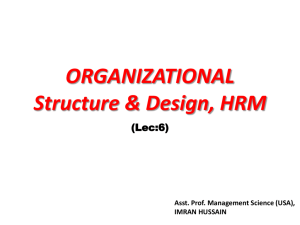Ch. 10,11 組織
advertisement
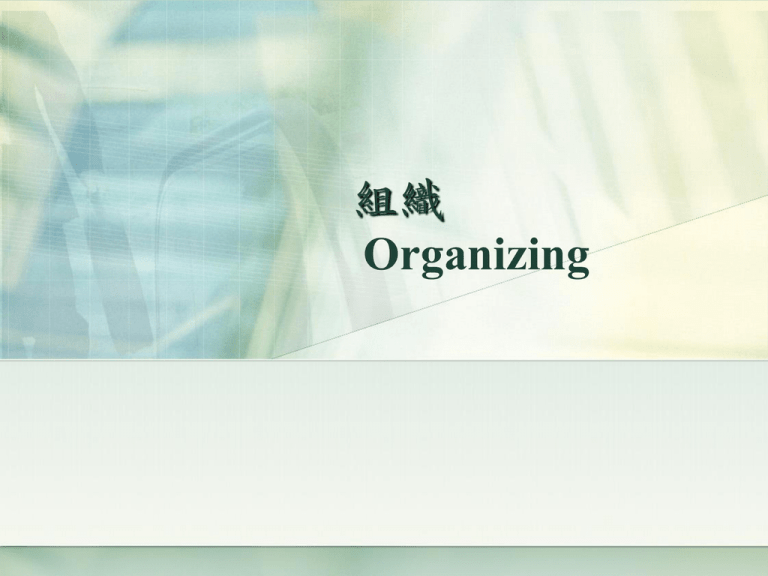
組織 Organizing • organization chart vs. organizing • 組織的目的在於 讓平凡人做不平凡事。 (P. F. Drucker) • 不要期待主管給你溫暖,因為他站的位置比你高 ,比你更寒冷。 (104, Simon) 2 綱要 一、組織設計之定義:工作安排與結構面 二、組織設計之實務應用:七個常見實例 三、組織設計之今日挑戰 四、Contemporary Issues In Managing Change 3 一、 組織設計之定義:工作安排與結構面 1. 工作專業化 2. 部門化 3. 指揮鏈 4. 管轄幅度 5. 集(分)權 6. 形式化 討論:複雜度(分科、分層、差異化), 集權度,形式化。 4 1. Work Specialization 工作專業化 The degree to which tasks in the organization are divided into separate jobs with each step completed by a different person. Overspecialization can result in human diseconomies from boredom, fatigue, stress, poor quality, increased absenteeism, and higher turnover. 5 Economies and Diseconomies of Work Specialization 2. Departmentalization 部門化 Functional Grouping jobs by functions performed jobs by product line Grouping jobs on the basis of product or customer flow Product Grouping Geographical Grouping jobs on the basis of territory or geography Process Customer Grouping jobs by type of customer and needs 7 Functional Departmentalization: cost L, morale H, 隧道視線 Plant Manager Manager, Engineering Manager, Accounting Manager, Manufacturing Manager, Human Resources Manager, Purchasing 8 Product Departmentalization Bombardier, Ltd. Mass Transit Sector Recreational and Utility Vehicles Sector Mass Transit Division Recreational Products Division Bombardier-Rotax (Vienna) Logistic Equipment Division Rail Products Sector Industrial Equipment Division Bombadier-Rotax (Gunskirchen) 9 Geographical Departmentalization Vice President for Sales Sales Director, Western Region Sales Director, Southern Region Sales Director, Midwestern Region Sales Director, Eastern Region 10 Process Departmentalization Plant Superintendent Sawing Department Manager Planing and Milling Department Manager Finishing Department Manager Inspection and Shipping Department Manager Assembling Department Manager Lacquering and Sanding Department Manager 11 Customer Departmentalization Director of Sales Manager, Retail Accounts Manager, Wholesale Accounts Manager, Government Accounts 12 未來重要趨勢 customer departmentalization e.g. 楷模廣告 13 3. Chain of Command 指揮鏈 The continuous line of authority that extends from upper levels of an organization to the lowest levels of the organization and clarifies who reports to who. Unity of Command 指揮統一 The concept that a person should have one boss and should report only to that person. e.g. Enron. Whistling?(吹口哨,打小報告) 14 Authority 職權 The rights inherent in a managerial position to tell people what to do and to expect them to do it. Responsibility The 職責 obligation or expectation to perform. Line vs. Staff 15 Chain of Command and Line Authority 16 Line vs. Staff Authority 17 4. Span of Control 管轄幅度 The number of employees who can be effectively and efficiently supervised by a manager. affected by: Skills and abilities of the manager Employee characteristics Characteristics of the work being done Similarity of tasks Complexity of tasks Physical proximity of subordinates Standardization of tasks IS, Culture, Leading style,…… 18 Contrasting Spans of Control Organizational Level Members at Each Level 1 1 1 2 4 8 3 16 64 4 64 512 5 256 4,096 6 1,024 7 4,096 Span of 4 Operatives = 4,096 Managers (levels 1-6) = 1,365 Span of 8 Operatives = 4,096 Managers (levels 1-4) = 585 19 5. Centralization 集權 The degree to which decision-making is concentrated at a single point in the organizations. Decentralization 分權 Organizations in which decision-making is pushed down to the managers who are closest to the action. 20 6. Formalization 形式化 The degree to which jobs within the organization are standardized and the extent to which employee behavior is guided by rules and procedures. Highly formalized jobs offer little discretion over what is to be done. e.g. Explicit job description. 21 Mechanistic vs. Organic Organization: Paradigm Shift (軍隊,C&C vs.交響樂團,知識工作者) Mechanistic • High Specialization • Rigid Departmentalization • Clear Chain of Command • Narrow Spans of Control • Centralization • High Formalization Organic • Cross-Functional Teams • Cross-Hierarchical Teams • Free Flow of Information • Wide Spans of Control • Decentralization • Low Formalization 22 權變理論架構 vs. one best way 權變因素 組織結構 .策略 .複雜度 .規模 .集權度 .技術 .形式化 .環境 (權力,政治) 組織效能 .獲利,成長 .顧客滿意 .員工滿意 23 Contingency Factors: 1. Strategy: Structure follows Strategy (A. Chandler) Innovation 攻,Amazon, Starbucks Pursuing competitive advantage through meaningful and unique innovations favors an organic structuring. Cost minimization 守,McDonald Focusing on tightly controlling costs requires a mechanistic structure for the organization. 24 2. Size As an organization grows larger, its structure tends to change from organic to mechanistic with increased specialization, departmentalization, centralization, and rules and regulations. 25 實證研究 規模 + 複雜度 .水平差異化 .垂直差異化 政府機關 (企業組織) e.g. Parkinson’s law: The number of subordinates increases at a fixed rate regardless of the amount of work produced. 26 實證研究 規模 - 集權度 專業管理者 (擁有者) 27 實證研究 + 規模 形式化 相依單位 (獨立單位) 28 3. Technology Organizations adapt their structures to their technology. Routine technology = mechanistic organizations Non-routine technology = organic organizations 29 Structural Characteristics Woodward’s Findings on Technology, Structure, and Effectiveness Unit Production Mass Production Low vertical differentiation Low horizontal differentiation Low formalization Moderate vertical High vertical differentiation differentiation High horizontal Low horizontal differentiation differentiation High formalization Low formalization Most effective structure Organic Mechanistic Process Production Organic 30 4. Environmental Uncertainty Mechanistic organizational structures tend to be most effective in stable and simple environments. The flexibility of organic organizational structures is better suited for dynamic and complex environments. 31 二、組織設計之應用:七個常見實例 1. 簡單結構 2. 功能結構 3. 部門結構 4. 團隊編組 5. 專案與矩陣結構 6. 無邊界組織 7. 學習型組織 討論: 1. 大潤發採購部品保組,遠航飛安室 2. 自主團隊有多自主? 32 Traditional Designs 1. Simple structure 簡單結構 Low departmentalization, wide spans of control, centralized authority, little formalization 2. Functional structure 功能結構 Departmentalization by function Operations, finance, human resources, and product research and development 3. Divisional structure 部門結構 Composed of separate business units or divisions with limited autonomy under the coordination and control the parent corporation. 33 Contemporary Designs 4. Team structures 團隊編組 The entire organization is made up of work groups or self-managed teams of empowered employees. 5. Matrix and project structures 專案與矩陣結構 Specialists from different functional departments are assigned to work on projects led by project managers. Matrix and project participants have two managers. In project structures, employees work continuously on projects; moving on to another project as each project is completed. 34 A Matrix Organization in an Aerospace Firm 35 6. Boundaryless Organization 無邊界組織 An flexible and unstructured organizational design. Removes internal (horizontal) boundaries: Eliminates Has the chain of command limitless spans of control Uses empowered teams rather than departments Eliminates external boundaries: Uses virtual, network, and modular organizational structures to get closer to stakeholders. e.g. Nike 36 7. Learning Organization 學習型組織 An organization that has developed the capacity to continuously learn, adapt, and change through the practice of knowledge management by employees. 37 Characteristics of a Learning Organization Organizational Design • Boundaryless • Teams • Empowerment Organizational Culture • Strong Mutual Relationships • Sense of Community • Caring • Trust The Learning Organization Leadership • Shared Vision • Collaboration Information Sharing • Open • Timely • Accurate 38 三、組織設計之今日挑戰 Keeping Employees Connected Widely dispersed and mobile employees Building a Learning Organization Managing Global Structural Issues Cultural implications of design elements 39 The Importance of HRM HR: 1. 熟悉相關法令 ,2.勞資關係良好, 3.競爭優勢之來源 辨認與選擇能勝任的員工,提供員工必要的技巧 與知識,留住勝任、高績效員工。 e.g. Microsoft, ADK: Attractive, Develop, Keep 40 The HRM Process Environment Human Resource Planning Recruitment Selection Identification and selection of competent employees Decruitment Orientation Training Performance Management Career Development Adapted and competent employees with up-to-date skills and knowledge Compensation and Benefits Environment Competent employees who are capable of sustaining high performance over the long term 41 Examples of High-Performance Work Practices Self-managed teams Decentralized decision making Training programs to develop knowledge, skills, and abilities Flexible job assignments Open communication Performance-based compensation Staffing based on person–job and person–organization fit 42 EAP 簡介 ■ 「員工協助方案」(Employee Assistance Programs): 連結組織內外各項可利用資源,積極協助員工解決生活、 工作與健康上會影響其工作效率的問題。 EAP企業風雲榜 整合式 EAP方案服務模式 Some Suggestions for a Successful Management Career 46 人力資源管理之當前課題 1. 組織重整,人力精簡, Downsizing 2. 工作人力之多樣性, Work Force Diversity 3. 性騷擾, Sexual Harassment, Workplace Romances 4. 兼顧家庭生活, Work-Life Balance 5. Controlling HR Costs 47 The Unwritten Laws of Business (1) 當你是職場新人 However menial and trivial your early assignments may appear, give them your best efforts. One of the first things you owe your supervisor is to keep him or her informed of all significant developments. (2) 當你成為管理者 Do not try to do it all yourself. Put first things first in applying yourself to your job. (3) 品格永遠是基本 One of the most valuable personal traits is the ability to get along with all kinds of people. Regard your personal integrity as one of your most important assets. 48 四、Contemporary Issues In Managing Change Face it: The only constant thing about change is that it’s constant. 沒有壞,不要動它?John Kotter, “Leading Change”, 1996. “The Heart of Change”, 2002. “A Sense of Urgency”, 2009. 49 Who moved my cheese? (Spencer Johnson) 四個主角 嗅嗅:嗅出市場變化,勇於嘗試新方法,及時應變 快快:執行力 哼哼:總是找藉口,”我們向來都是……”,不知變通 哈哈:雖然一開始觀望, 但 open mind, 能容納新觀點, 改變行為。 Change can take your life into the next level! 認清世事無常,監督變化,迅速因應, 改變自己,享受轉變, 做好迅速改變自己的準備,一遍又一遍樂在其中。 50 External and Internal Forces for Change External • Changing consumer needs and wants • New governmental laws • Changing technology • Economic changes Internal • New organizational strategy • Change in composition of workforce • New equipment • Changing employee attitudes 51 借力使力 助 力 現 況 組 織 阻 力 改組過程 目 標 組 織 52 1. The Change Process The Calm Waters Metaphor 平靜止水 (Lewin) Unfreezing the status quo Changing to a new state Refreezing to make the change permanent White-Water Rapids Metaphor 激流泛舟 The lack of environmental stability and predictability requires that managers and organizations continually adapt (manage change actively) to survive. 毛老師在觀光局 反敗為勝的 Lee Iacocca 讓大象跳舞的 Lou Gerstner 53 2. Managing Organizational Change Three Types of Change: 結構,技術,人 54 3. Managing Resistance to Change Why People Resist Change The ambiguity and uncertainty that change introduces The comfort of old habits (inertia) A concern over personal loss of status, money, authority, friendships, and personal convenience The perception that change is incompatible with the goals and interest of the organization 55 Managerial Actions to Reduce Resistance to Change 降低抗拒之技巧 • Education and communication • Participation • Facilitation and support • Negotiation • Manipulation and co-optation • Selecting people who accept change • Coercion 56 Kotter's 8 Steps 1. 2. 3. 4. 5. 6. 7. 8. Acting With Urgency, vs. 自視太高 Developing the Guiding Coalition, vs. 缺少有力的變革領導 團隊 Developing a Change Vision, vs. 低估組織願景的重要性 Communicating the Vision Buy-in, vs. 變革願景未做充分溝 通 Empowering Broad-based Action, vs. 坐視問題叢生 Generating Short-term Wins, vs. 欠缺近程戰果 Don't Let Up, vs. 太早宣布勝利 Make Change Stick, vs. 紮根不實 2015/4/8 任維廉教授 Professor William Jen 57 Issues in Managing Change: Making Change Happen Successfully Embrace change—become a change-capable organization. Create a simple, compelling message explaining why change is necessary. Communicate constantly and honestly. Foster as much employee participation as possible—get all employees committed. Encourage employees to be flexible. Remove those who resist and cannot be changed. 58 Issues in Managing Change: Handling Employee Stress 這瓶水多重?你能拿多久? Functional Stress 鑽石是壓力造成的!壓力到底是好是壞? How Potential Stress Becomes Actual Stress When there is uncertainty over the outcome. When the outcome is important. e.g. 當掉1/3, 荷馬壓力量表。 59 Symptoms of Stress 60 Reducing Stress Engage in proper employee selection Use realistic job interviews for reduce ambiguity Improve organizational communications Develop a performance planning program Use job redesign Provide a counseling program Offer time planning management assistance Sponsor wellness programs 61 壓力研究之典範 背景脈絡 人口統計變項 駕駛員工作相關 背景變項 壓力反應與結果 工作壓力源 調節變數 12–62 公車駕駛員知覺到的職業環境要求與資源 資源 調整照明 改善噪音 調整座位 站長領導 親友與家人的支持 要求 高工作負荷 低控制特性 高社會隔離 其他 因應策略 休閒放鬆 63 How Study Management? 1. Come to class, 2. Read the material, 3. Do your assignment: 分組作業:上網找資料,討論當前熱門議題。 (7) 上網 key in: “Examples of High-Performance Work Practices”, 寫心得。 (8) 上網找「員工協助方案(EAP )」成功例子,寫 心得。 (9) 上網找 「組織改組 (Reorg.) 」成功例子,寫心得。 (10) 上網找如何處理變革帶來的壓力之實例,寫心 得。 64 回顧 比較 Mechanistic VS. Organic organization Unfreeze VS. Refreeze Driving VS. Restraining forces 65 Terms to Know cross-functional teams authority span of control centralization employee empowerment formalization matrix structure virtual organization learning organization organizational change 66 Case: 爭功邀寵 (跨部門常見的問題) 1. 你認為 Alex 為何非常生氣? 2. 誰在爭功邀寵? 3. 若你是 Alex, 會採取什麼行動?先找誰談? James, Max, 還是誰?為什麼? 67 Takeaways: Don’t 假定自己已掌握全部事實。 假定對方有偏見,動機可疑。 單方面讓步,給對方好處。or 簡單地拒絕 對方要求。 專橫跋扈,頑固閉塞。 未曾評估對手的觀感和反應,就採取行動。 忽略自身行為對目前及未來的影響。 68 Takeaways: Do 一開始就主動詢問對方看法,據此設定目標, 及達成目標之方法。 了解對方的動機與考量,提出多個建議方案, 請對方調整。 以事實及公平原則說服對方。 尊重對方,言行贏得對手尊敬,建立互信。 不僅談問題,還討論過程,如陷入僵局則放 慢步調。 69 Takeaways: Others 我想要的東西,有些自己可以掌控,有些掌握在別人手上。 故要得到我想要的東西,必須先知道別人要什麼。別人的 行為準則不見得和我一樣,有時必須順應情況,調整自己。 一昧的坦白與率直很好嗎?還是要看情境與對象? 對方是自制且謙和的人,還是進取而貪婪的人? 過度大方,還是過度小氣與小心? 其他經驗分享:增強寬廣視野(由技入道),決策技巧, 自我/團隊認同,環境敏感度與適應能力。 70 自己怎麼看別人? 看老闆:機車,挑剔。 看同事:見不得人好。 看部屬:難帶,要求授權。 71 別人給你打幾分? 老闆看你:只專注在一小塊拼圖上,老是需要 被激勵。 同事看你:本位主義,隧道視線,卡在中間。 部屬看你:沒有願景?還是不能溝通清楚? 72 男人的七個敵人 73 能自省者,無敵! 認識、接受、喜歡自己,提升他人。改變自己很 難,從小我,自私,到視他人為夥伴,助人,完 成大我。 作為別人老闆:自己激勵自己。幫助員工,學著 放手,讓整個組織動起來。 作為別人同事:值得尊敬。相信別人的善意,多 溝通,藉合作為公司帶來價值。 作為別人部屬:總是達成目標,超越期望。 74 Personal Advice 1. Domain knowledge 要深:function / disciplinary skills. 2. Background knowledge 要廣:ability to apply knowledge across situations. Business:不一定是你死我活,而是善用比自己能力更強 的人,並且和他們合作,互利共存。 - Andrew Carnegie Align:單打獨鬥力量小。若能發揮自己長處,又知道如何 槓桿做得比你好的伙伴。只要方向與策略不離譜,個人願 意學習、改進,團隊不猜忌,則成功機會將大增。 Integrate, partnership:了解你所處的超系統,學習跟那些 不曾合作過的人合作,試著與與利害關係人共創價值。 75 Opportunities Do 持續表現優異, over deliver: 永遠做到比老闆要求的更多 展現良好的道德、操守與品格 有領導欲,願意承擔更大責任 Don’t 缺乏主動精神,紀律差 不善處理人際關係, 不能溝通,不懂體諒 對組織抱著狹隘偏頗的觀點,把個人利益放在公司利 益之上,愛單打獨鬥,不願擔責任,不想學會看懂財 務報表,不想管錢 76 Learned optimism! *合字難寫:一人一張口。負面思考! 反掌之間,變成正面態度之能量。 *化敵人為貴人! 加班:時間管理不佳?賣力工作! 抱歉,我不喜歡那樣:沒禮貌?實話實說。 *逆向操作,把缺點變優點: 傲慢?很有自信! 挑剔!重視品質。 77 Q&A E-Mail:wljen@mail.nctu.edu.tw 78
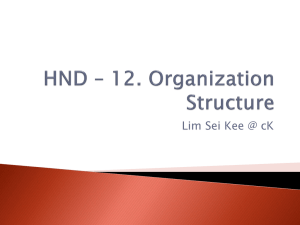
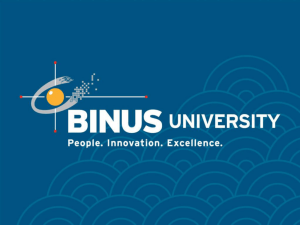
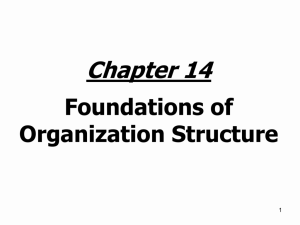
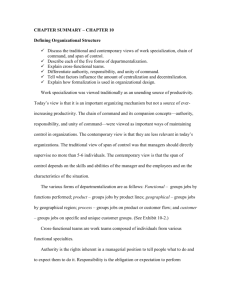
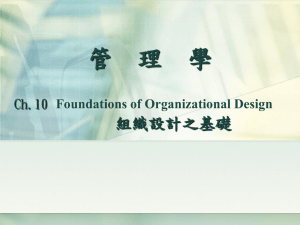

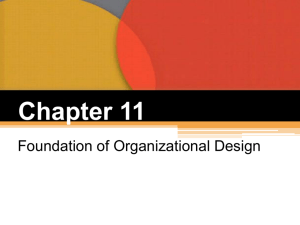
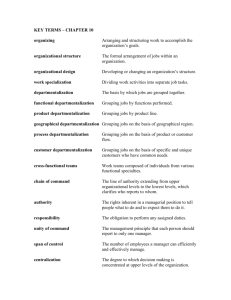
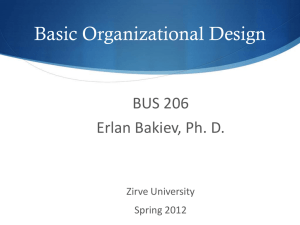
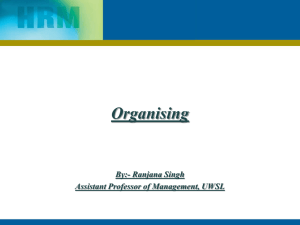
![[SUMMARY] Manajemen (Chapter 10)](http://s3.studylib.net/store/data/008743248_1-4e2b946756cf43cea567b50ee8fe6208-300x300.png)
